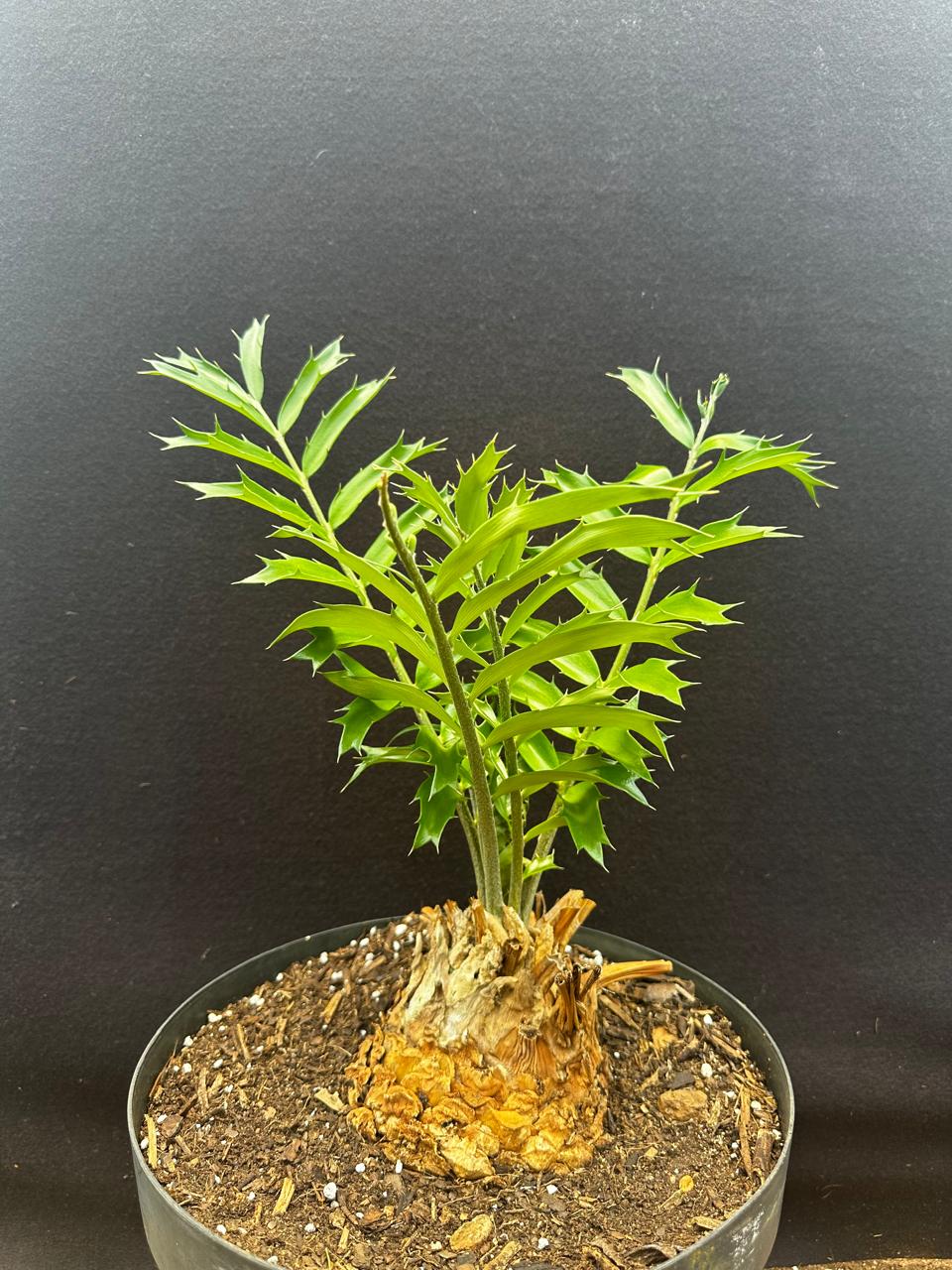


Encephalartos ferox
Encephalartos ferox is a relatively common cycad found in coastal areas of north-east Zululand, Mozambique, and beyond. Despite habitat destruction, it thrives in sandy soils under dry, scrubby conditions. The species is well-adapted to coastal environments, and its name "ferox," meaning "fierce," refers to its spiny, well-armed leaflets.
Cones
The cones of Encephalartos ferox are striking, with both male and female cones being a vibrant salmon-pink to red color when immature, turning bright orange as they mature. Female plants typically produce one large cone, about 25-50 cm tall and 20-40 cm in diameter, which holds bright red seeds. Male plants may bear 1-6 sub-cylindrical cones per crown, measuring 40-50 cm tall and 8-10 cm in diameter. The bright coloration of the cones and seeds attracts birds, which aid in seed dispersal.
Leaves
The dark-green leaves of Encephalartos ferox are 1-2 meters long, straight, and spread outward, with a noticeable downward curve at the tip. Freshly sprouted leaves are covered in fine hairs, but these disappear as the leaves mature. Median leaflets are about 15 cm long and 3-5 cm broad. Each leaflet bears 2-4 medium-sized teeth on the upper and lower margins, with larger triangular lobes at the apex. The lobes are distinctly twisted, giving the leaflets a rugged, fierce appearance, matching the species' name.
Stems
The stems of the Zululand cycad are usually unbranched, but they may occasionally branch from the base. Most of the stem remains buried in sand, with only the aerial portion visible. This aerial section is usually less than 1 meter tall, though it can reach up to 2 meters. The stem is 30-35 cm in diameter, and a thick, brown skirt of dead leaves forms at the base, protecting the stem unless burned off by fire. New growth is often triggered after fires, allowing the plant to recover and regenerate.